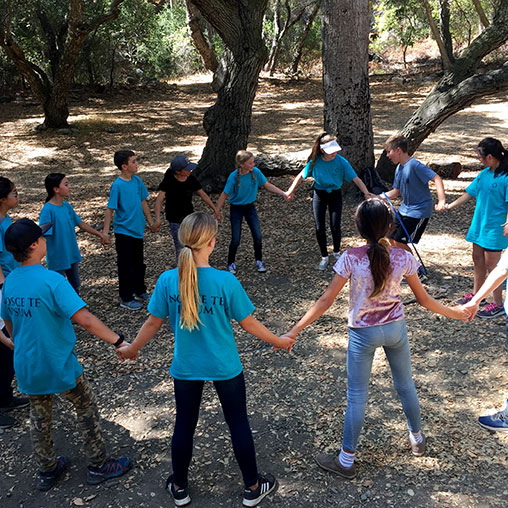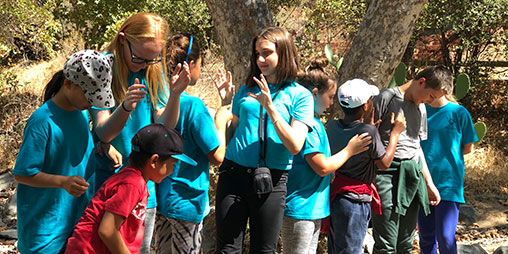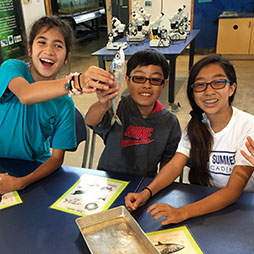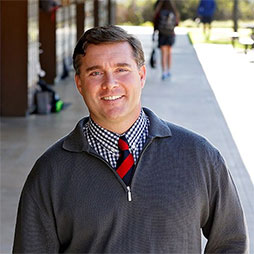



by Head of Middle School Dan Lang
Built into just about every experience at Parker, students have the opportunity to learn about both leadership and teamwork. From structured character education lessons that embrace the ethical framework of S.T.R.I.V.E. first introduced in the Lower School, to classroom expectations, and even camp. Camp? Yes, camp.
Each year I have the privilege of joining the Grade 6 team as they guide our newest Middle Schoolers through three days of studying the ecosystems that make up the watershed in San Juan Capistrano. Beginning in the mountains and continuing down to the ocean, students learn not only how each ecosystem functions but also, how they all function together. Nature practices teamwork.
As we began the program on Wednesday afternoon, our Ocean Institute instructor led students through a series of exercises with only a little direction for what the end result should be. Games such as the Helium Ring, Tank Commander, and Ring Pass were fun, and through some follow-on discussion students improved their understanding of both leadership and teamwork.
In Helium Ring, the instructor stands with a hula hoop overhead. Students are allowed just one finger to touch the hoop with the goal of lowering it to the ground in a smooth level path. If you have participated in this exercise before, you may recall that it is not as simple as it sounds. In an effort to keep the ring level, participants typically lift the ring, hence the name “helium ring.” Eventually, one or more individuals realize that they have to communicate together and have a shared approach to accomplish the goal.
In Tank Commander, partners work to locate and pick up a soft object that teams throw at other tanks to get them “out.” The catch is that the “Tank” is blindfolded and only has the sound of the “Commander’s” voice to guide progress. Neither the “Tank” nor the “Commander” can succeed without each other and significant cooperation.
Finally, in Ring Pass students interlock their arms and have to work together to pass a ring around the circle. Of course, the interlocked hands make it difficult for one to put their body through the ring to “pass” it along. Eventually, one student discovers the most efficient method for passing the ring and steps into the role of leader. Other students make additional suggestions to refine the technique, and eventually, the group is passing the ring around the circle in under thirty seconds.
Questions from our instructor peppered these activities. For example, “How many of you have been told to be a leader rather than a follower?” Every student’s hand went up. “What happened when everyone tried to lead?” Many students voiced the same answer, “Chaos.” As we continued the discussion, students noted that many of them stepped into the role of “leader” at different moments and held the “follower” role at other times.
As students transitioned out of our introductory time and began to work in teams collecting and analyzing data from the environment, they reinforced and deepened the understanding that their own individual strengths are most powerful when connected to a shared understanding of the immediate goal, and a shared understanding of how to achieve that goal. Even in a bright and talented group of Parker students, teamwork made their individual talents more potent.
